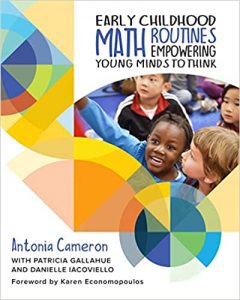Mathematics is a wonderful game. It’s one that can stretch students’ minds and expose them to the beauty and unexpected delights that lie behind every good problem.
I’ve always gravitated to colleagues who share my love of math’s playful, game-like side, so I quickly made friends with Toni Cameron when we met at P.S. 503 in Brooklyn nearly a decade ago. I was piloting interactive math activities for the Dynamic Number project, and Toni was coaching elementary teachers through her work with Metamorphosis Teaching Learning Communities. With our common interest in creating joyful math opportunities, it wasn’t long before we began to collaborate at P.S. 503, at professional development events led by Metamorphosis, and (more recently) on activities for at-home learning.
I’ve been lucky to benefit from Toni’s deep understanding of what makes for good mathematics problems and her ability to respect and tease out children’s thinking. Now, Toni has taken all these skills and shared them in her new book, Early Childhood Math Routines: Empowering Young Minds to Think.
At the heart of the book are “thinking routines.” While repetition and predictable patterns are hallmarks of routines, thinking routines are not rote. Toni explains that such multilayered routines “can be used to develop specific content ideas (and meet different standards) and they also can be seen as tools to develop playful mindsets, problem-solving habits of mind, and a wide range of communication skills.” To encourage such outcomes, teachers need to look carefully at the norms they are establishing. For example, are students given opportunities to share ideas and collaborate with each other, or is their communication primarily focused on answering the teacher’s questions?
To make these matters more concrete, Toni presents a variety of thinking routines with lots of rich detail, including conversations between teachers and students. One of my favorites is the “quick image” routine where images are shared with students for just three to five seconds. Below is an original image and four versions of a quick image that might be flashed:
Notice how the use of color in each image affect the ways you perceive, group, and count the dots. Imagine A draws your attention to the four red dots, whereas image B emphasizes two equal, symmetric sets. Image C suggests three groups of four (or two fours and two twos) while image D is open to many interpretations.
Throughout Toni’s book, I was struck by the inventiveness of her thinking routines and reminded that creating good problems is an art form. Toni has mastered that art and generously shares these routines with all of us.
